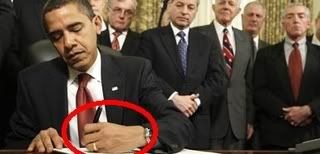[cross posted at E Pluribus Unum]
Shai Agassi has started a company called Better Place and he's busy building a new paradigm.
Cars with zero emissions. At Better Place, we know that if we are going to reduce transportation’s impact on our planet, this must be our goal. Not just better gas mileage. Not just reduced emissions.
No emissions. Zero.
OK, interesting. But aren't there more than a few electric cars and electric car companies gearing up right now? What makes Agassi's company so special?
For starters, he's not in business to build cars.
Better Place is a California-based, venture-backed company that aims to reduce global dependency on petroleum through the creation of a market-based transportation infrastructure that supports electric vehicles, providing consumers with a cheaper, cleaner, sustainable, personal transportation alternative.
Hey look, here's what their website says:
Better Place is working to build an electric car network, using technology available today. Our goals? Sustainable transportation, global energy independence and freedom from oil.
So how does it work? Here's Tom Friedman:
The Better Place electric car charging system involves generating electrons from as much renewable energy — such as wind and solar — as possible and then feeding those clean electrons into a national electric car charging infrastructure.
From Wikipedia:
In January 2008, Better Place announced a Memorandum of Understanding (MOU) with Renault-Nissan to build the world's first Electric Recharge Grid Operator (ERGO) model for clean transportation in Israel. Under the agreement, Better Place will build the electric recharge grid, and Renault-Nissan will provide the electric vehicles. In 2009, Better Place expects to deploy hundreds of charging stations as the company moves toward wide-scale deployment in 2011.
The first prototype cars are the Renault Mégane with a battery instead of a fuel tank and an electric motor instead of an internal combustion engine...
The range of the car running on just one battery is from about 100 miles to 120 miles . By replacing the battery at a service station, the range is limited only by the geographical distribution of the battery-swapping infrastructure.
Friedman, again:
Under the Better Place model, consumers can either buy or lease an electric car from the French automaker Renault or Japanese companies like Nissan (General Motors snubbed Agassi) and then buy miles on their electric car batteries from Better Place the way you now buy an Apple cellphone and the minutes from AT&T. That way Better Place, or any car company that partners with it, benefits from each mile you drive. G.M. sells cars. Better Place is selling mobility miles.
BTW, did you catch that? General Motors snubbed Agassi.
But I digress...
Friedman sees in this new paradigm a similarity with the paradigm Apple created for the music industry via the introduction of the iPod and iTunes:
What Agassi, the founder of Better Place, is saying is that there is a new way to generate mobility, not just music, using the same platform. It just takes the right kind of auto battery — the iPod in this story — and the right kind of national plug-in network — the iTunes store — to make the business model work for electric cars at six cents a mile. The average American is paying today around 12 cents a mile for gasoline transportation, which also adds to global warming and strengthens petro-dictators.
What does an electric car infrastructure look like?
The batteries of a zero-emission vehicle need three things in place in for optimum functionality: charging spots, battery switching stations, and software that automates the experience.
The charging spots will keep the batteries topped off with power so that they always have 100 miles of driving capacity. They are located where you work, live, shop and dine in parking lots so that an electric car will have the ability to recharge when the software instructs it to top off.
For trips longer than 100 miles (161 km), battery switching stations will be available roadside. Stations are completely automated, and the driver’s subscription takes care of everything. The driver pulls in, and the depleted battery is quickly replaced with a fresh one, without anyone having to leave the vehicle. The process takes less time than it does to fill a tank of liquid fuel.
Because most electric vehicles will be charging during the evenings while at home, the batteries become distributed storage for clean electricity. In Israel, for example, excess power from the growing solar industry will be stored in the cars’ batteries.
Similarly, in Denmark, unstored energy from the country’s wind turbines will be utilized. Better Place can help each market identify and develop its own “virtual oil fields” of renewable energy. Same with Australia which possesses wind farms throughout the country. So too does California.
That's just scratching the surface. Here's the tactical plan:
Better Place will build its first Electric Recharge Grids in Denmark, Israel and Australia where the electricity will be generated by renewable energy. Denmark and Israel have enacted policies, which create a tax differential between zero-emission vehicles and traditional cars, to accelerate the transition to electric cars. ...California and Hawaii are the first US states to announce deployment of Better Place electric car networks.
Here's an 8-minute video of Agassi speaking at a conference. The sound is a bit echo-y but hang in there -- it's an inspirational look at the future.
And General Motors? Having snubbed Agassi, they'll be lucky if they last out the next 90 days.
 Exposing the lack of compassion by conservatives and
debunking right wing hypocrisy at every opportunity.
Exposing the lack of compassion by conservatives and
debunking right wing hypocrisy at every opportunity.





 Subscribe via Email
Subscribe via Email
0 Comments:
POST A COMMENT